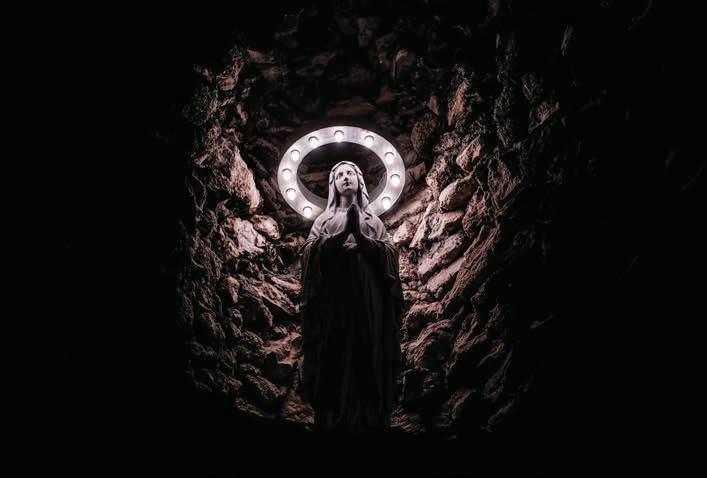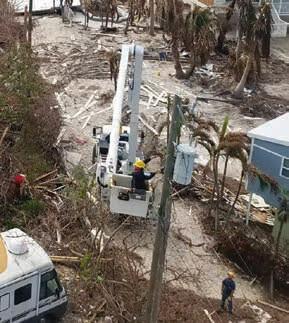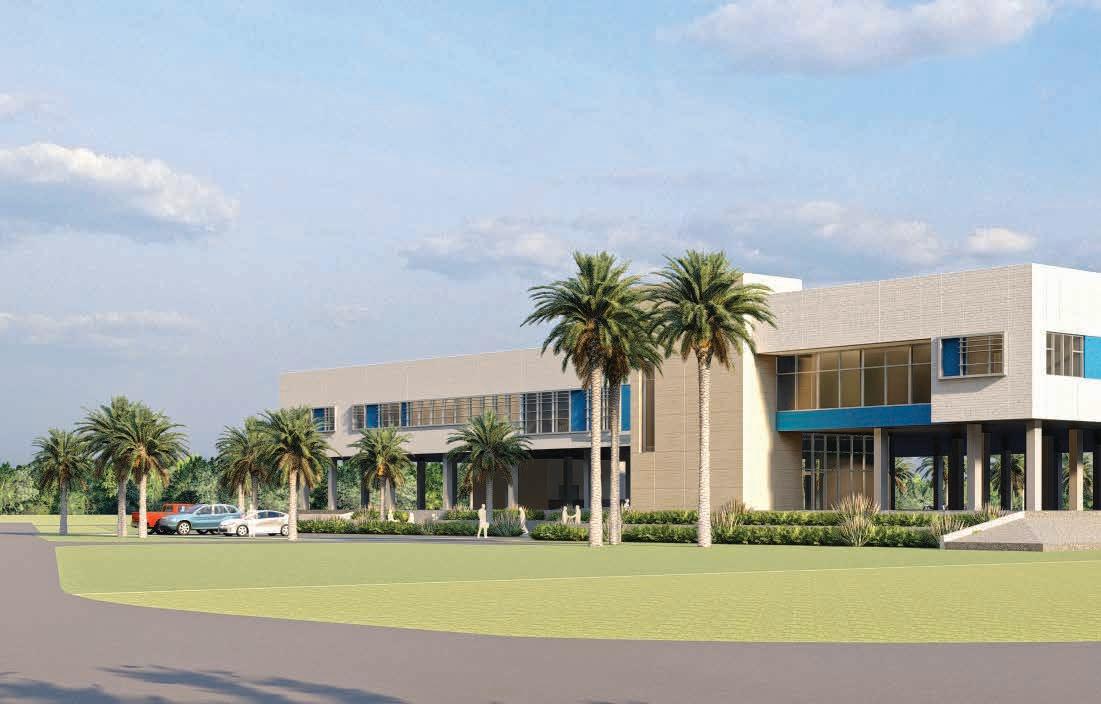
4 minute read
SHRINE STANDS
Grotto brings faith in times of a storm
By Mark Hedden
The grotto’s reputation has grown since its early beginnings, and not just amongst Saint Mary Star of the Sea’s parishioners. As storms approach, Key Westers of all faiths, and some of no known faith whatsoever, will stop by to light a candle in hopes that the structure will continue its 101-year streak of warding off the worst of the storms.
Key West was not always such an easy place to live. When the first five nuns from the Sisters of the Holy Names of Jesus and Mary arrived from Canada in October of 1868, the freighter they arrived on, the “Sedgwidge,” unloaded them and their luggage, and some additional freight, and then set a course for Texas. The ship encountered trouble in the middle of the Gulf of Mexico, though, and sank with no survivors.
The nuns were welcomed in Key West and given use of an old barracks, which had since been converted into a public goat barn, to live. There were only two schools on the island at the time, and both were private and charged tuition. Within a month the sisters had cleaned and repaired the barracks, converted it into a tuition-free school, and enrolled their first 26 pupils in the Convent of Mary Immaculate. It was the first Catholic school in Florida.
Two months later there was a yellow fever epidemic, and the Sisters shut the school down and went to work as nurses. After the epidemic the school was reopened, and in 1871 they had their first graduation ceremony — for one student. By 1872 they had enrolled 150 students and, being the segregated south, started an additional school for black students. There was a smallpox epidemic that year, though, and the nurses shifted their duties from teaching to nursing again.
By 1897, when a 19-year-old Sister Luis Gabriel arrived, they’d built new facilities and had 609 students enrolled.
Over the next 25 years, Sister Gabriel was here when Domingo Rosillo made the first flight across the Florida Straits from Key West to Havana. She was here when Henry Flagler started work on the Overseas Railroad, and when he completed it and rode the length of it in his private rail car. She was here when World War I started and when it ended. She was here when the four waves of the Spanish
Influenza pandemic killed 25 to 50 million people across the globe, and at least 79 people in Key West.
But the thing that affected her the most during those years, the thing that made the place seem so vulnerable, were the hurricanes. The island had been hit by them in 1909, 1910 and 1919. The 1919 storm had winds estimated at 110 mph, destroying many homes and businesses, and sinking the “Valbanera” between the Dry Tortugas and Key West and taking the lives of all 488 people on board.
To celebrate the 25th anniversary of Sister Gabriel’s religious life, her family proposed to send her on a pilgrimage to Rome. She decided that she would rather do something for the Key West community and build a grotto dedicated to Our Lady of Lourdes.
"She was an educator, so what she did was, she engaged high school students to get coral rock from throughout the island. Which meant as soon as that happened, it was no longer her grotto, but it was the grotto of the people of Key West," Baker said.
At the grotto’s dedication on May 25, 1922, Sister Gabriel is said to have commented that as long as the shrine stands, Key West will not feel the full brunt of another hurricane.
Gabriel served the Convent of Mary Immaculate for another 25 years, noting that she knew everyone in Key West “except the transients.” She died here in 1948 and her ashes, as well as those of several other nuns from the order, are buried in a small cemetery next to the grotto. A week after her death, a hurricane with winds reaching 120 mph came barreling towards Key West, but veered east, the eye passing over the less populated Boca Chica, and Key West experienced little damage. Two weeks after that, a second hurricane followed a similar path, and veered further east.
That has pretty much been the story ever since. Key West has been hit by hurricanes, but it hasn’t experienced the full wrath of a serious storm.
“I think it was in Hurricane Wilma that a lot of trees went down and somebody said, you know, she failed. And I said, you know, it's still standing. The grotto – it's still standing,” Baker said.
Make sure FKEC has your current phone numbers. For faster restoration, make sure the number(s) you are most likely to call from to report an outage are registered to your account. Update at www.fkec.com/access-your-account/ or call 305-852-2431


Make sure FKEC can access your meter. To make repairs FKEC must have 24 hour access to your electric meter equipment.
If your power goes out, check your breakers first. Approximately 33% of all power outages are caused by breaker issues, which are the responsibility of the member to resolve.
Report the outage. Call 305-852-2431 or Text “outage” to 45183 to report your outage. Note, your mobile number must be preregistered with FKEC to report via text. www.fkec.com/outage-center/
Safety first! Stay clear of all downed power lines or electrical equipment. Call 911 to report a downed power line you feel presents a clear and imminent danger. Then report to FKEC at (305) 852-2431.
3Drenderings oftheupcoming MonroeCounty Emergency Operations Center,scheduled forcompletion before the 2024 hurricane season.

AJAX BUILDING COMPANY/ Contributed
Oppositepage: Elevatorshaftsand stairwells,which serve as anchor pointsfortherest ofthebuilding, areamongthe first structures constructed. ALEX
RICKERT/Keys Weekly
By Alex Rickert





